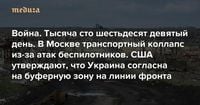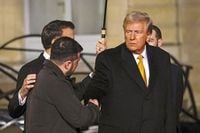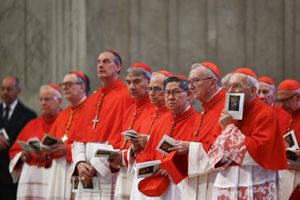As the conflict between Russia and Ukraine continues to escalate, a fragile ceasefire is set to take effect from midnight on May 7 to May 8, 2025, coinciding with the 80th anniversary of Victory Day in Russia. This truce, announced by Russian President Vladimir Putin, is expected to last until May 11, marking a significant moment in the ongoing hostilities.
On May 7, Yuriy Ushakov, an aide to President Putin, reported that dialogue between Russia and the United States remains intense, with the Vice President of the United States, Jay Di Vance, acknowledging that while Washington believes Russia is making excessive demands in negotiations regarding Ukraine, there is an observable desire from Moscow to find a resolution to the crisis. Vance expressed cautious optimism about the potential for resolving the conflict, emphasizing that the U.S. aims to focus on a long-term solution rather than a temporary ceasefire, which he believes Russia does not find acceptable.
Meanwhile, Dmitry Peskov, the Press Secretary for President Putin, criticized Ukraine’s recent military actions, particularly drone attacks on Russian regions. He pointed out that Ukraine has shown no willingness to pursue peaceful negotiations, as evidenced by its continued aggressions. Peskov stated, “The Kyiv regime has not made a single statement indicating readiness to go for a temporary truce during the Victory Day celebrations.” He added that Moscow is only hearing ambiguous statements from Ukraine while witnessing its military actions.
On the ground in Ukraine, the situation remains dire. Explosions were reported in Kyiv on the night of May 7, leading to fires and casualties. Emergency alerts were issued due to threats of ballistic missile and drone attacks, causing significant damage and prompting humanitarian responses from local authorities and organizations.
In a related development, Keith Kellogg, the U.S. Special Representative on Ukraine and Russia, revealed in an interview with Fox News that the U.S. has proposed the establishment of a demilitarized zone along the current front lines, which both Ukraine and Russia would control. This initiative aims to create a 30-kilometer buffer zone to facilitate discussions around a potential ceasefire. Kellogg noted that Kyiv is open to discussing a freeze on the conflict based on the existing front lines, stating, “They effectively said: we retreat 15 kilometers, and you Russians retreat 15 kilometers.”
However, the Russian Ministry of Defense reported that overnight, they had to intercept over 500 Ukrainian drones in a single day, showcasing the ongoing intensity of military operations. The attacks included significant strikes on critical defense industry facilities within Russia, further complicating the prospects for peace.
In the wake of these developments, President Zelensky of Ukraine rejected a proposed three-day ceasefire from May 8 to May 10, arguing that such a truce would only serve to provide Putin with a temporary reprieve during the Victory Day parade. Instead, Zelensky has called for a more comprehensive ceasefire lasting 30 days, a proposal that has not found favor in Moscow.
As the situation unfolds, the international community watches closely. In Washington, President Joe Biden has expressed concerns regarding the Trump administration's approach to Ukraine, characterizing it as a modern form of appeasement. In an exclusive interview with the BBC, Biden stated, “Putin considers Ukraine to be part of Russia, and anyone who thinks he will stop if Ukraine cedes certain territories is simply deluded.” He emphasized the importance of maintaining strong ties with European allies in the face of Russian aggression.
Amidst these tensions, the European Commission has reiterated its commitment to speeding up Ukraine's accession process to the European Union, reflecting a broader geopolitical shift as countries align against Russian expansionism.
As the conflict enters another critical phase, the focus remains on the actions of both Kyiv and Moscow, with hopes for a lasting peace hinging on the ability of both sides to engage in meaningful dialogue. The ceasefire, while a temporary measure, represents a potential turning point in the protracted conflict, but the path forward remains fraught with challenges.
In summary, while the ceasefire offers a glimmer of hope, the underlying tensions and military activities continue to threaten stability in the region. The coming days will be crucial as both sides navigate this complex landscape, and the international community remains poised to respond to the evolving situation.






